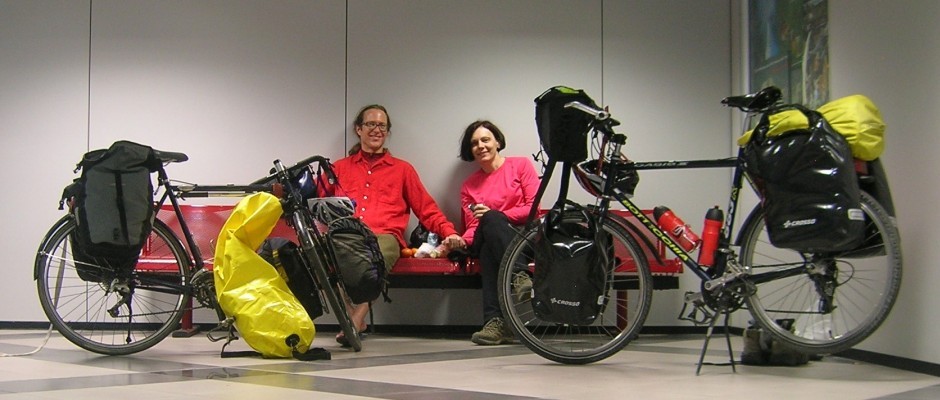Asking around at the mercado viejo in San Cristóbal de las Casas, we learned that it was probably possible to string together a series of shared taxis and colectivos to get from San Cristóbal to Tapijulapa. Would it be worth the trouble, we wondered?
The blogging couple at wandertooth made the trip from Villahermosa and clearly said, “no, it’s not worth it,” mostly due to the difficulty of transportation between Villahermosa and Tapijulapa. They also complained about the heat. Well, luckily I ignored them ’cause we certainly enjoyed Tapijulapa. From San Cristóbal you should expect some transportation adventures, but the leg they complained about — Tapijulapa-Villahermosa — was comfortable and easy to figure out.
Our first colectivo took us to Puerto Caté, a four way intersection that Jack and I bicycled through ten years ago. On a Sunday afternoon the frequent transportation coming from Bochil in the direction of Simojovel all arrived stuffed full. Eventually it was our turn to squeeze into an overcrowded minibus. It became a bit more comfortable after some passengers got off in El Bosque.
Ferda and I spent the night in Simojovel which used to be buzzing with Chinese businessmen buying amber. I’m not sure why they stopped coming. The next morning it was still three legs to get to Tapijulapa. Here’s Ferda at our quick breakfast stop in Huitiupán:
It was then a surprisingly long ride to Amatán on a pretty horrible road. I can’t imagine that passenger cars can make it through there in the rainy season. The only other passenger to go the whole way from Huitiupán to Amatán was a nurse who explained that it takes her eight hours to get from her home in Tuxtla Gutiérrez to her work in a village near Amatán. She does the round trip every week.
We probably waited two hours in Amatán for a passenger to fill the shared taxi to Tapijulapa, and then the driver felt inclined to race along excellent curvy pavement for 17km, the fifth and final leg from San Cristóbal de las Casas to Tapijulapa.
Tapijulapa is another of Mexico’s pueblos mágicos, far enough off the beaten path that it might not be so crowded on the weekends. Midweek it was easy to find a place to stay for two nights. It was “hot but not uncomfortable” according to my notes.
The local culinary specialty is pishul, una pizza tabasqueña, I guess you could say. It was tastier than it looks.
The local handicraft is basket making, using material collected from local trees.
For our full day in Tapijulapa we visited the waterfalls at nearby Villa Luz.
There’s a small museum and a small cave, but the highlights are some pleasant trails through the forest and hanging out and swimming at the waterfalls. Bring a lunch.
One morning we had coffee at a riverside restaurant and enjoyed watching the iguanas for a bit.
Bye, bye sleepy Tapijulapa.
Next up — Tlacotalpan. Once again I found a blogging couple who complained that visiting Tlacotalpan as a day trip from Veracruz wasn’t worth it. Is it worth more bus adventures all the way from Tapijulapa, we wondered?
First, like I said, it was easy to get from Tapijulapa to Villahermosa. From Villahermosa — a state capital — I figured we could perhaps find a direct bus all the way to Tlacotalpan — a UNESCO listed colonial city. Hahaha. The first class bus station and the second class bus station are some distance away from each other in Villahermosa, and scattered in the vicinity are the offices of many smaller bus operators. Asking around was rather confusing because people either hadn’t heard of Tlacotalpan or they confused it with nearby Tacotalpa.
We settled for Acayucan (famous perhaps as the base for a failed conspiracy against Porfirio Díaz in 1906?) and spent the night there.
The next leg was a surprisingly long de paso (2nd class) trip through beautiful, though sadly deforested, Los Tuxtlas all the way to the tiny hamlet of Buena Vista where we boarded a modern air-conditioned comfortable bus for the last 19km to Tlacotalpan. Wow, that took longer than expected!
Was it worth it? Absolutely, but that’s for my next post!
























